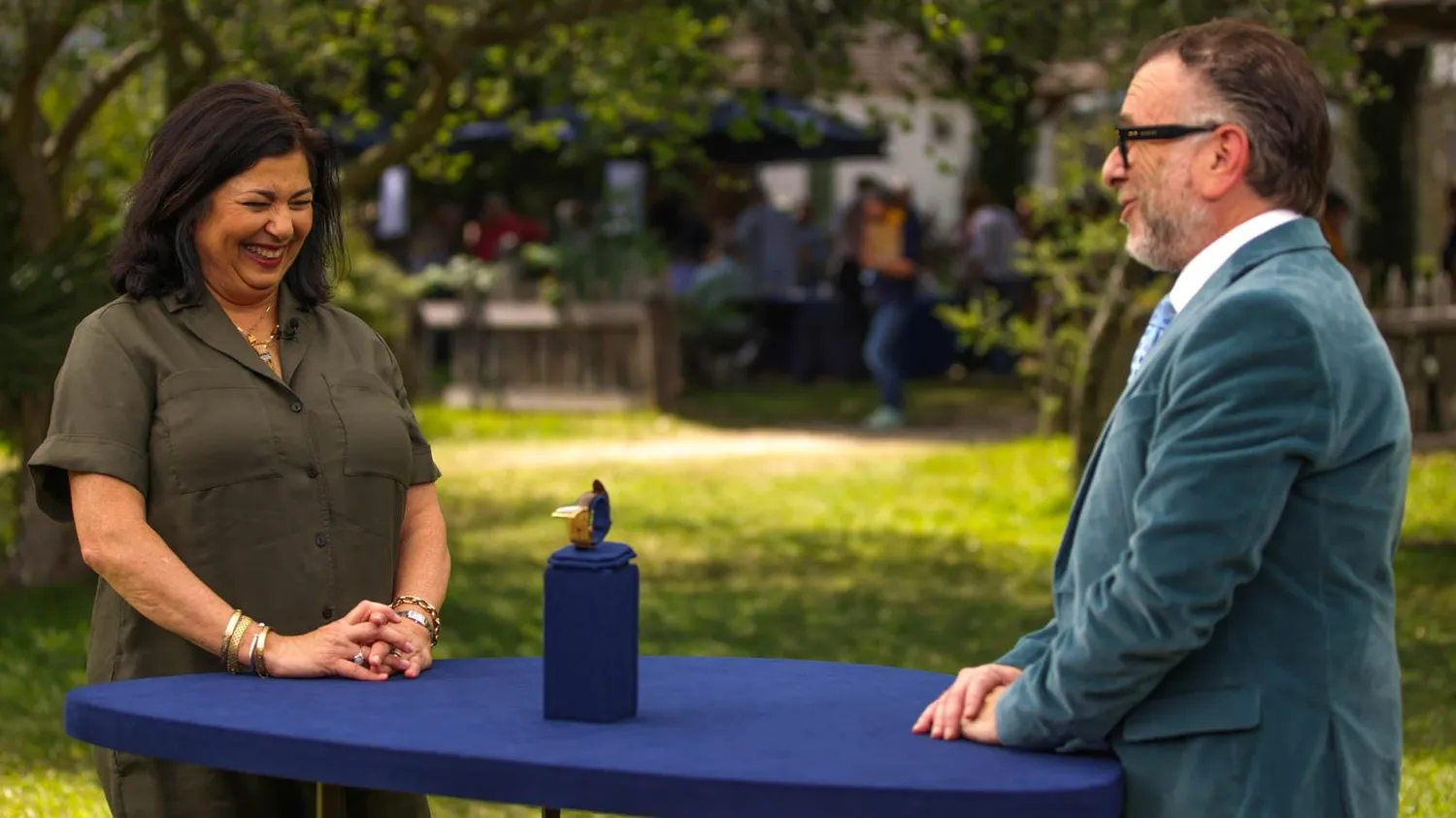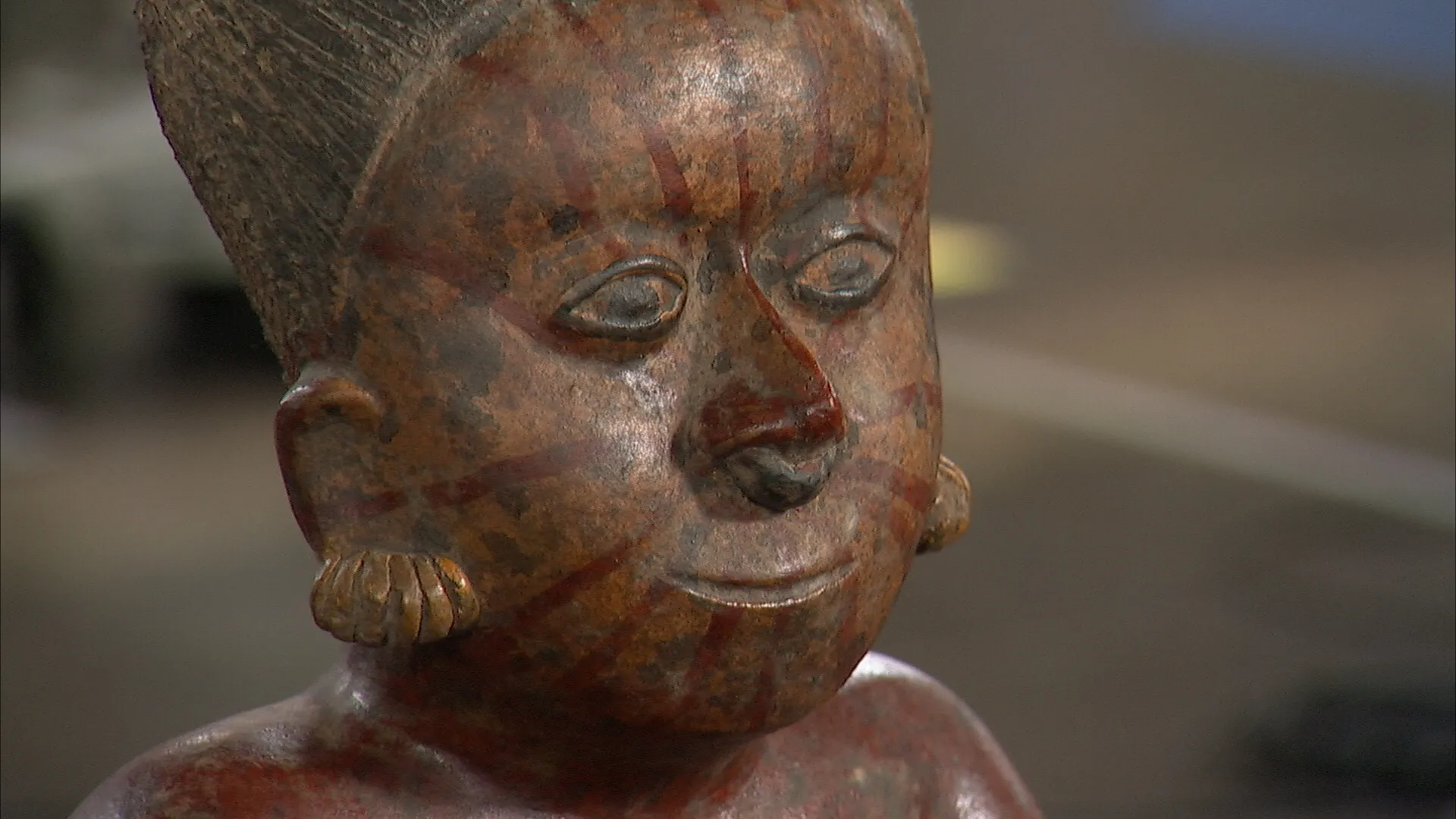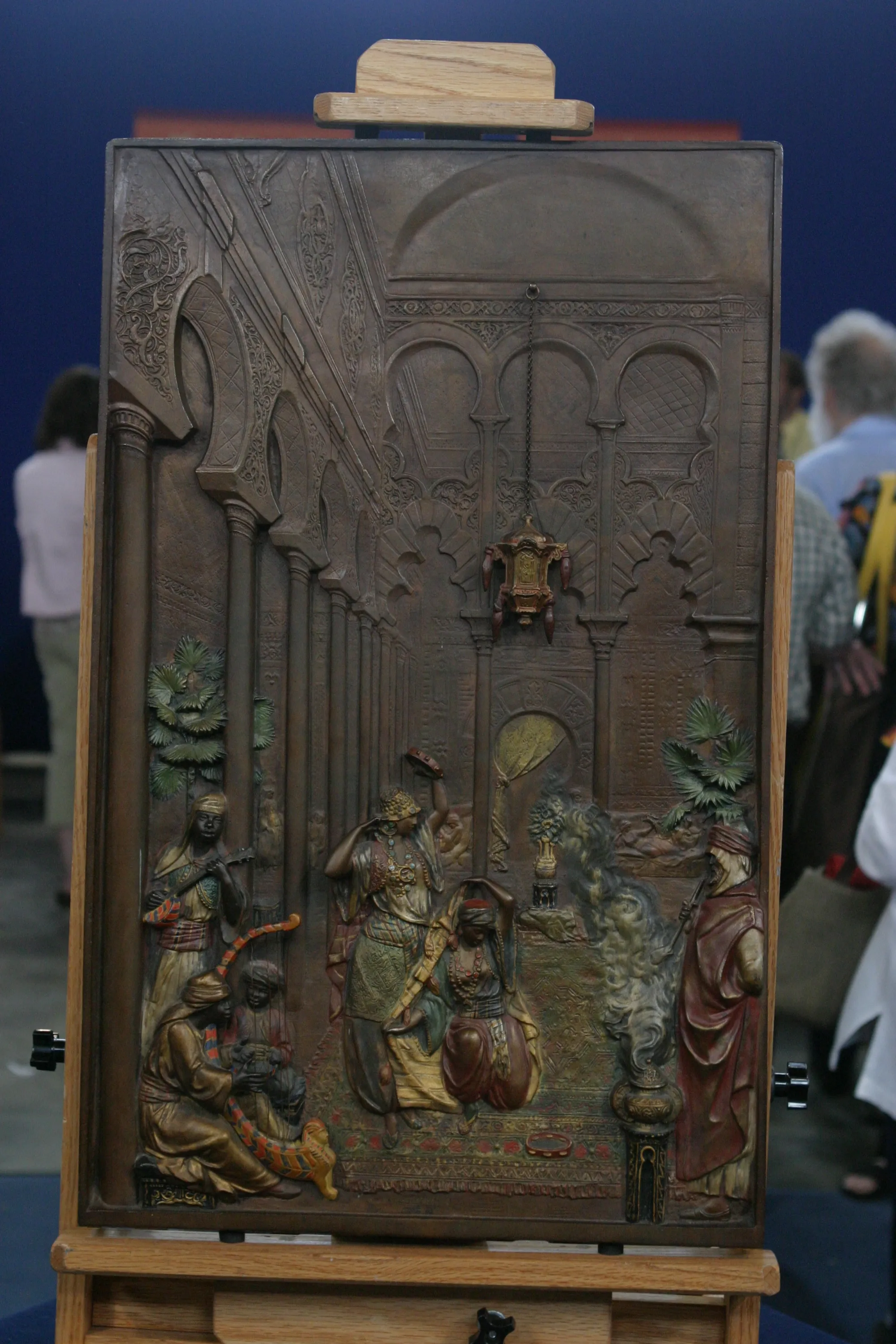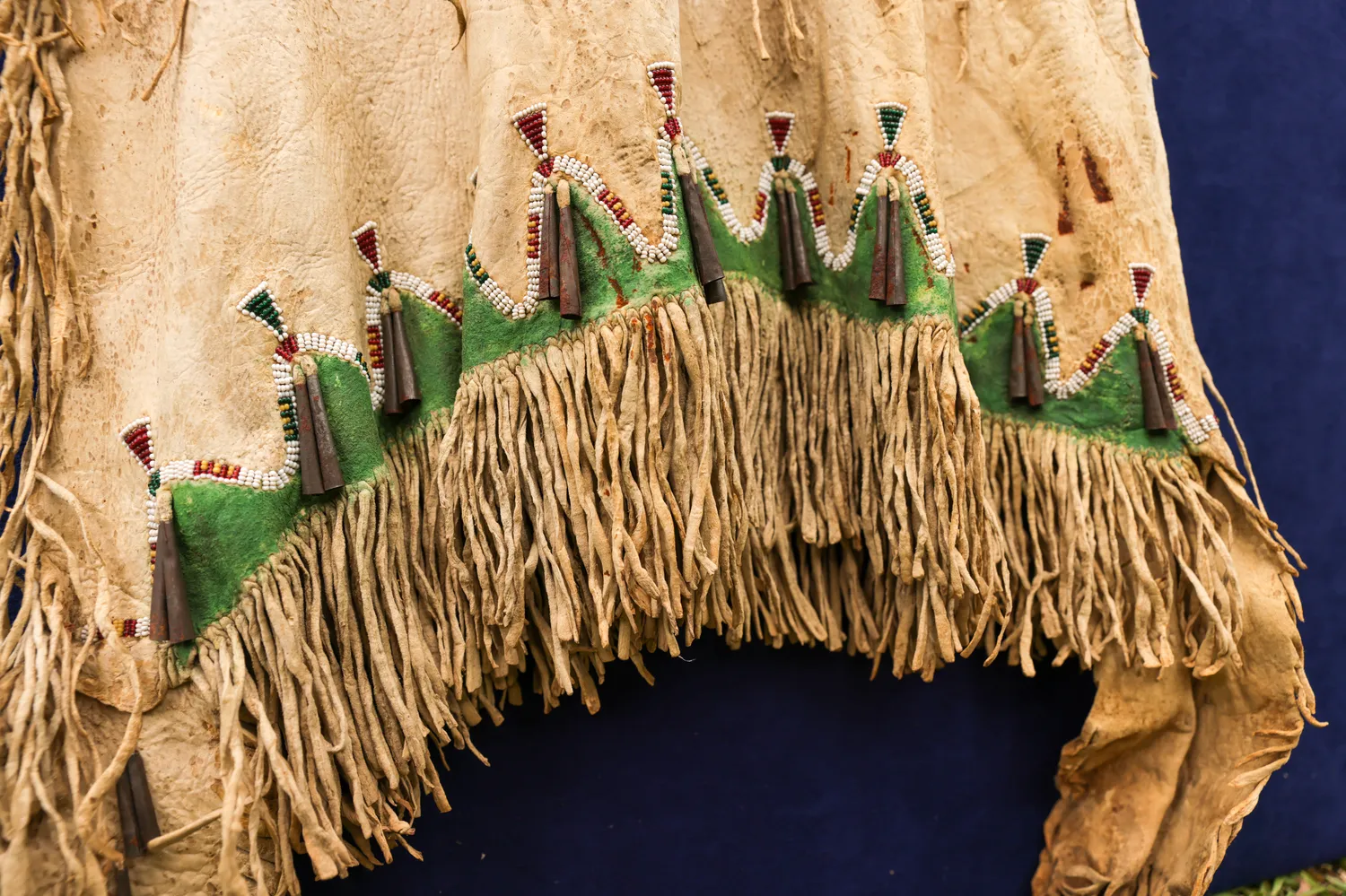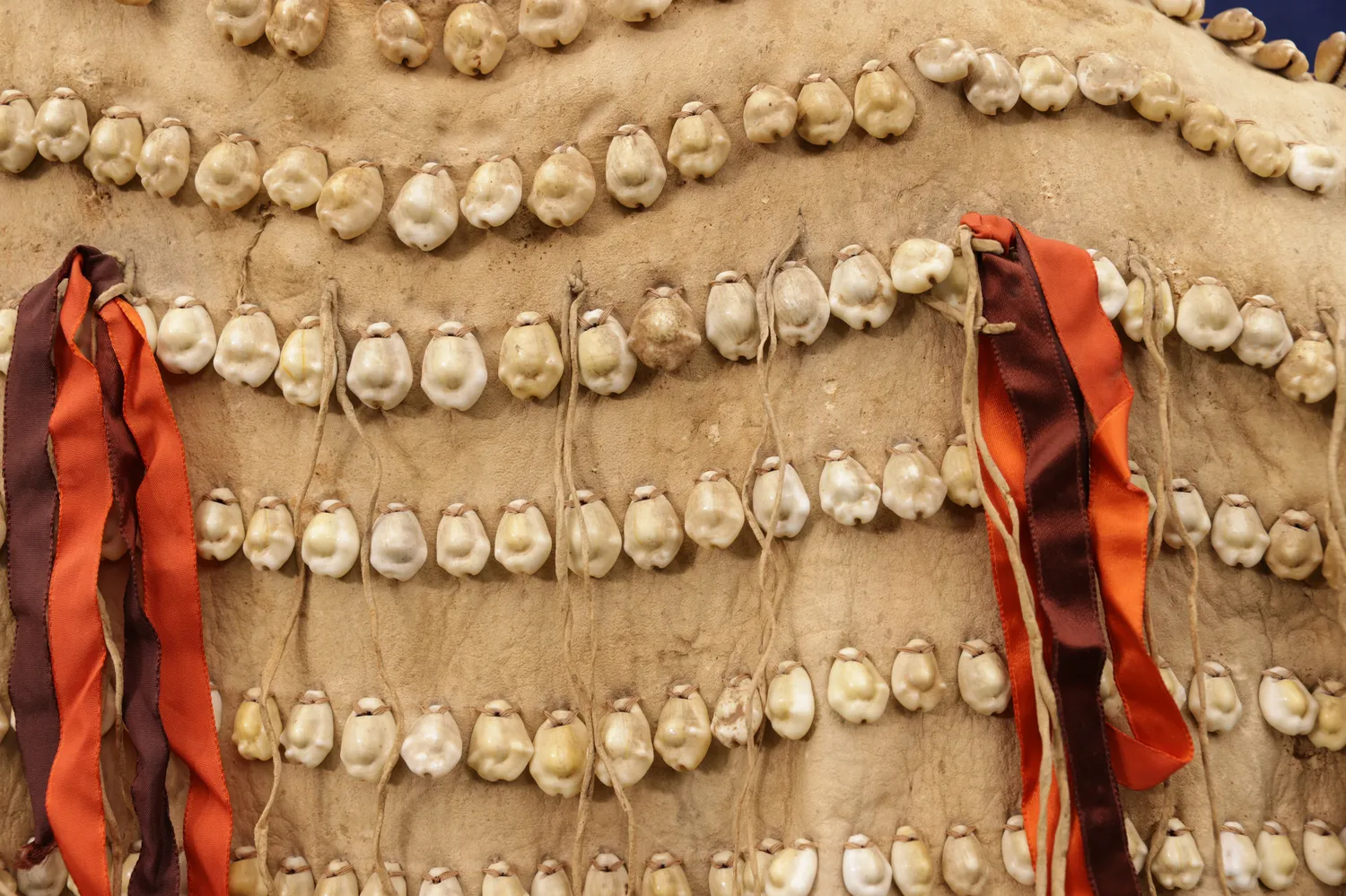GUEST: I inherited this from my mother about three years ago. Where she got it, I don't know, but she had it for a long time. She was from Oklahoma.
APPRAISER: Okay.
GUEST: And I'm assuming this would be from Oklahoma.
APPRAISER: It's from the Southwestern Plains, made by a Kiowa woman. The Kiowa people, an extraordinary tribe. Horsemen, equestrians of the first order. And they chased the buffalo from north to south, east to west. They originated in Western British Columbia, Canada. Came down through Western Montana and the Rocky Mountains, migrated, following the buffalo herds on horseback, down into the Southern Plains. Just post-Civil War, things were changing dramatically for Native Americans, particularly west of the Mississippi. Reservations were being established. The ability to, uh, roam freely was being, uh, seriously eroded. In 1867, a treaty was signed, the Medicine Lodge Treaty, and they lost their, uh, freedom to just roam.
GUEST: Mm-hmm.
APPRAISER: And thousands of Kiowas were sequestered on a reservation in Southwestern Oklahoma, onto about 2.8 million acres. A large amount of land.
GUEST: Yeah.
APPRAISER: But not, not so large when you consider what they had come from.
GUEST: Right.
APPRAISER: The Kiowa today are a proud nation, and this is a tribute to their heritage. It's a vital, vital tribe.
GUEST: Mm-hmm.
APPRAISER: This dates to 1890-1900.
GUEST: Mm-hmm.
APPRAISER: This is a young woman's dress-- the hide is deer. It's Native-tanned, would have been softened and prepared with the mashed-up brains of deer...
GUEST: Mm-hmm.
APPRAISER: ...that would provide both, uh, acid and lanolin. (chuckling): And then we have quite a bit of trade material on this. The glass beads are from Europe. The ribbons may well have been from France. I'm not certain about that, but Europe. These shells are from Africa-- they're cowrie shells. At the very bottom, there are tin cone dangles. (chuckles): Those would have been appropriated from food containers or snuff boxes. The long, long, long fringe, the Kiowa are famous for their ability to fringe garments. If it got wet, the hide sheds water quickly.
GUEST: Mm-hmm.
APPRAISER: And it evaporates. But in addition, when the lady is moving, the fringe moves, and it, it's just very, very poetic.
GUEST: (murmurs)
APPRAISER: The Kiowa, they are renowned for their beadwork and their design. Every element of this is carefully considered. This woman w, was really quite skilled. And this is not the first dress she made, I can tell you that much. This was an individually owned object.
GUEST: Yes.
APPRAISER: Not a clan object. That would have affected the, uh, potential salability.
GUEST: Mm-hmm.
APPRAISER: A Native tribe might wish to have certain things back in their possession, rightfully so. I don't believe this is one of them. On a retail basis, I would value this at around $7,000.
GUEST: (softly): Whoa.
APPRAISER: It, it's highly desirable. I can't tell you how much we enjoyed seeing this.
GUEST: Thank you. I appreciate that, I really do.

